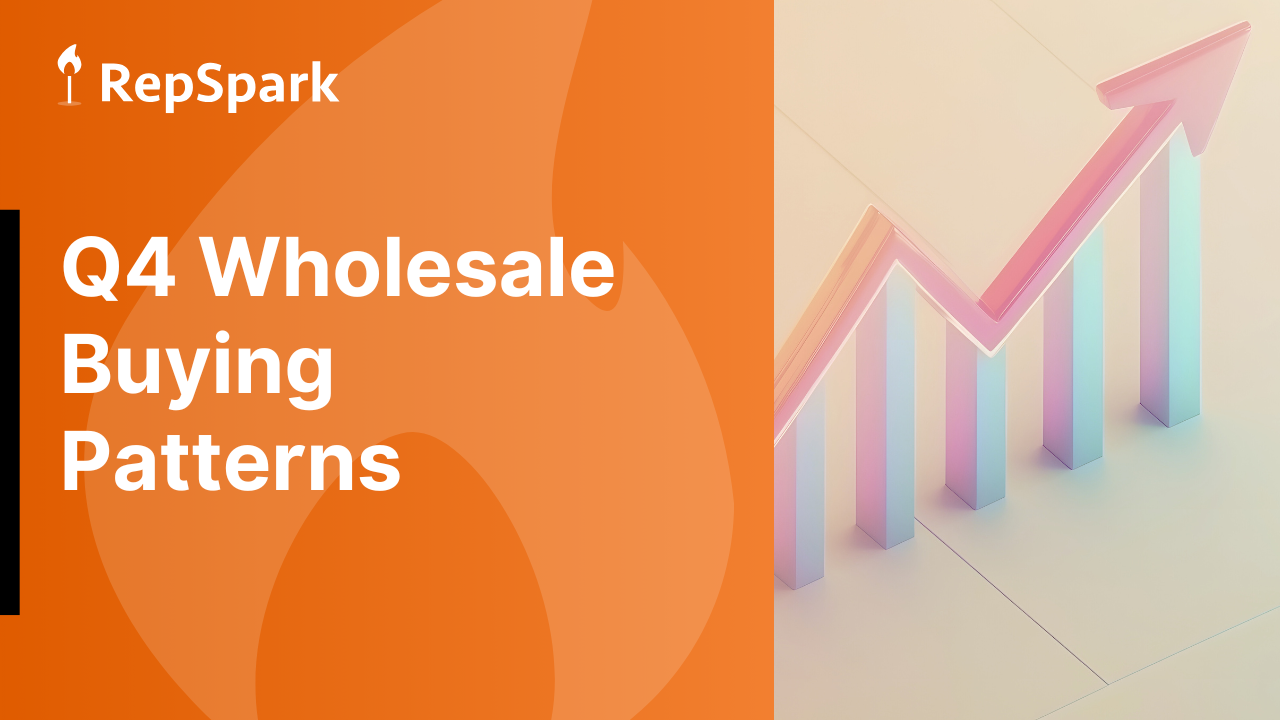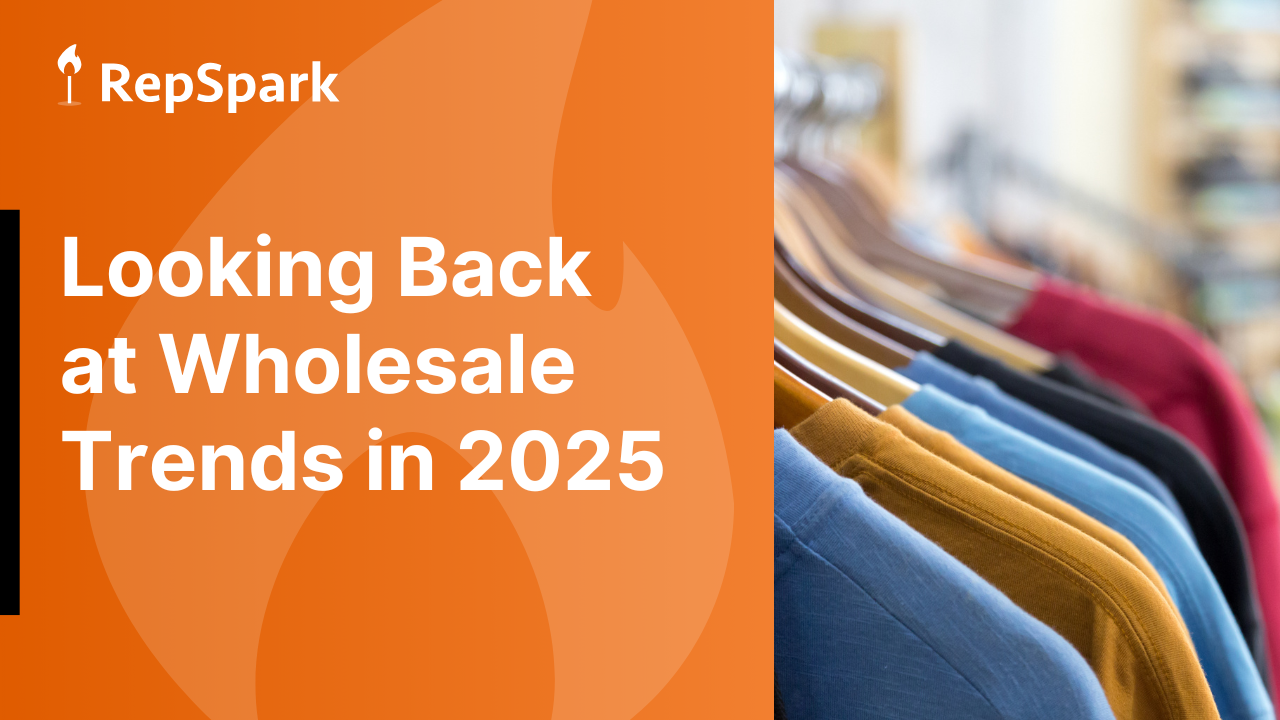Data-Driven Growth for Wholesale Brands
- Chapter I: Introduction
- Chapter II: How Can Wholesale Brands Use Data to Forecast Demand More Accurately?
- Chapter III: What Metrics Matter Most for Measuring Wholesale Success?
- Chapter IV: How Do Connected Systems Improve Forecasting and Inventory Control?
- Chapter V: How Can Analytics Strengthen Retailer Relationships?
- Chapter VI: How Can Digital Transformation Drive Long-Term Growth for Wholesale Brands?
- Chapter VIII: Conclusion
- Chapter VIII FAQ
Introduction
Data is becoming the foundation of growth for many brands in wholesale.
Every order, inventory adjustment, and retailer interaction tells a story about demand, opportunity, and operational efficiency. The challenge is connecting those stories across systems so they translate into smarter forecasting, better retailer relationships, and stronger margins.
For brands using RepSpark, data-driven growth happens automatically. By integrating sales insights, ERP data, and inventory forecasting into one connected platform, brands gain a clear picture of what’s selling, who’s buying, and where to focus next.
Keep reading to see how analytics and digital transformation empower wholesale brands to scale smarter.
Related Content
How Can Wholesale Brands Use Data to Forecast Demand More Accurately?
Accurate forecasting is the cornerstone of a profitable wholesale business. Overproduction ties up cash in inventory, while underproduction leads to stockouts and missed sales.
RepSpark’s Sales Forecasting tools analyze historical data by season, product type, sales rep, and retailer segment. This gives brands the ability to model demand patterns, anticipate reorder cycles, and allocate production resources effectively
With this level of insight, wholesale teams can identify best sellers early, align inventory to prebook commitments, and plan replenishment with confidence.
What Metrics Matter Most for Measuring Wholesale Success?
While DTC brands rely on conversion rates and CAC, wholesale success hinges on sell-through rate, average order value, booking completion, and on-time fulfillment.
RepSpark consolidates these KPIs into one centralized Sales Insights Dashboard, giving teams a real-time snapshot of account performance. From open orders and invoice status to top-performing SKUs and booking trends, brands can quickly spot opportunities for improvement.
These metrics empower sales leaders to make data-backed decisions, whether that’s reallocating stock to high-performing retailers or adjusting prebook strategies mid-season.
How Do Connected Systems Improve Forecasting and Inventory Control?
Disconnected systems create blind spots. When your ERP, order management, and B2B eCommerce tools don’t talk to each other, your data lags behind your business.
RepSpark solves this with real-time ERP integrations that sync inventory, order data, and pricing across platforms.
This ensures every stakeholder works from a single source of truth.
By connecting systems, brands eliminate duplicate data entry, reduce human error, and improve demand accuracy. The result is leaner inventory, better fulfillment rates, and faster decision-making across the entire supply chain.
Related Content
How Can Analytics Strengthen Retailer Relationships?
Wholesale is so much about partnerships. Retailers expect transparency, quick responses, and data-backed guidance from the brands they buy from.
With Customer Dashboards and Reporting Tools, RepSpark gives sales reps account-level insights like order history, sell-through velocity, and top-performing categories. Reps can use these insights to help retailers stock smarter, reorder faster, and maximize margins.
By turning raw data into retailer insights, brands position themselves as strategic partners rather than just suppliers.
How Can Digital Transformation Drive Long-Term Growth for Wholesale Brands?
Data transformation is about connecting people, processes, and systems so decisions happen faster and with more confidence.
Brands that embrace digital transformation gain visibility into their entire sales pipeline. RepSpark acts as the connective layer that transforms siloed data into real-time business intelligence.
Over time, this connectivity fuels compounding growth: improved forecasting reduces waste, better A/R management accelerates cash flow, and data transparency builds stronger retailer trust.
Conclusion
Data-driven growth isn’t about having more data. It’s about having the right data connected in one place.
RepSpark gives wholesale brands a 360° view of sales, inventory, and retailer behavior through integrated analytics, forecasting, and ERP connections.
Whether you’re optimizing inventory turns, identifying your next best retailer, or planning next season’s buy, RepSpark turns every click, order, and SKU into actionable growth.
FAQ
How can wholesale brands use data to forecast demand more accurately?
Analyze historical sales by season, product type, account, and rep, then connect your B2B portal to your ERP so forecasts reflect real-time orders and inventory.
What metrics matter most for wholesale growth?
Prioritize sell-through, booking completion, average order value, on-time fulfillment, open-to-buy alignment, and aging inventory; a single dashboard helps teams act quickly on these KPIs.
How do connected systems improve forecasting and inventory control?
When your ERP, order entry, and B2B portal are synced, you get one source of truth for stock, pricing, and orders which reduces errors, prevents overselling, and speeds allocation decisions.
How can analytics strengthen retailer relationships?
Account-level insights into order history, sell-through velocity, and top categories let reps recommend smarter assortments that improve margin and sell-through.
What does digital transformation look like for wholesale brands?
It connects data, people, and processes across your tech stack so teams move from manual reports to real-time insights that guide forecasting, inventory, promotions, and retailer success.
Can I compare performance year over year?
Yes. Use reporting to compare current results versus prior seasons or years to spot repeat winners, slow movers, and category trends.
Will this work with my existing ERP or accounting system?
Modern B2B platforms integrate with leading ERPs so orders, pricing, invoices, and inventory stay in sync; dashboards then reflect current realities, not stale exports.
Can I export reports for leadership or investors?
Yes. Key reports can be exported and shared so stakeholders see the same KPIs without manual spreadsheet work.
Does RepSpark provide user-level analytics?
Yes. Sales managers can monitor rep activity and performance to track productivity and your goals.
From Our Blog
Stay up to date with what is new in our industry, learn more about the upcoming products and events.

Q4 Wholesale Buying Patterns Brands Need to Know
.png)
RepSpark Is Now SOC 2 Type 2 Compliant, Here’s What That Means

